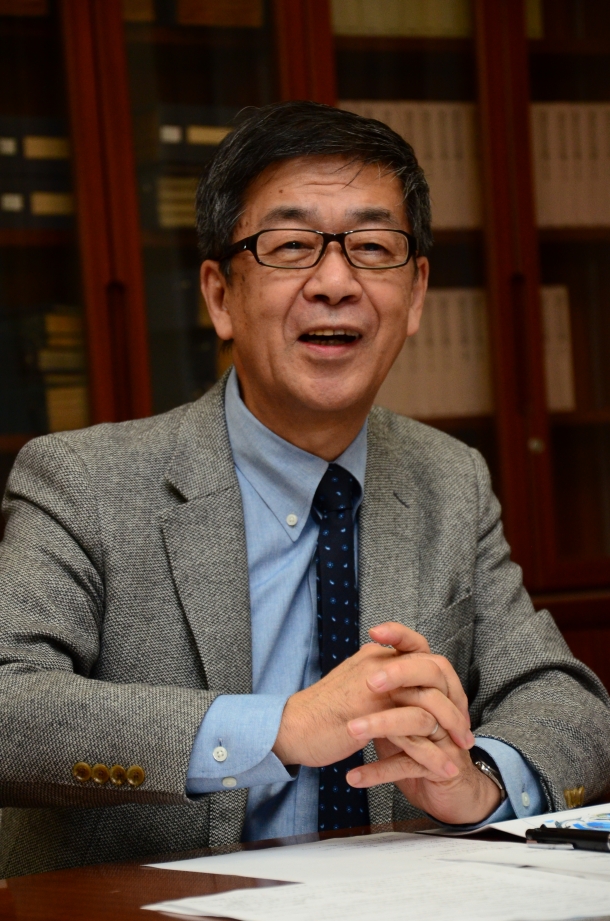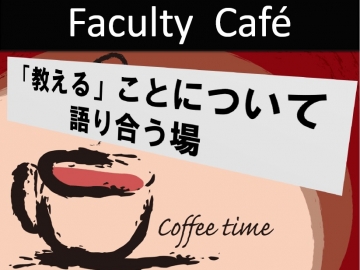WasedaX
Vice President of Academic Affairs and Personnel Affairs Suga and
Associate Professor Sugimoto
(New Course)Sports Injury Prevention
Since September 2015, Waseda University has been using edX (founded by Harvard University and MIT in the U.S.), a provider of Massive Open Online Courses (MOOC), to deliver a wide variety of courses to a worldwide audience.
Associate Professor Daisuke Sugimoto, Faculty of Sport Sciences, has been teaching the course “Sports Injury Prevention” since 2021. Vice President Koichi Suga spoke with Dr. Sugimoto on what he hopes to convey through this course.
Aiming to listen to the voices from the field and conduct research that has practical use
Vice President Suga: Dr. Sugimoto, how did you come to doing research in your current field?
Dr. Sugimoto: At first, I went to the US to learn how to give best clinical care to injured athletes. Upon completion of my bachelor’s degree, I took a certification exam (NATABOC) and became a certified athletic trainer. Since then, I had worked various clinical settings nearly 10 years. During that time, I saw many athletes who walked away from field and court due to serious injuries. Those experiences hit me hard and further made me realize importance of injury prevention.
Each athlete is unique and special, and injury prevention methods differ based on the sport, gender, and age. It is definitely worth to pursue injury prevention with understanding unique aspect of sport, gender, and age. The most challenging, but rewarding part is to implement the injury prevention strategies into real world.
Vice President Suga: It seems like your research requires diverse knowledge of a variety of fields, such as that of the body’s mechanisms. Will you be conducting research together with people from other fields?
Dr. Sugimoto: Of course, this research cannot be done all by myself. It is important to know prevalent of certain injuries in each sport. Along with the prevalence of injury, timing of the injury relative to season, susceptible body parts for injury, and frequency/burden of the sustained injuries are crucial parameters.
We often receive various inputs from staff members and athletes themselves. Needless to say, we work closely with athletes and athletic staff members including coaches, fitness/strength conditioning staff members, and medical personnel. I want to take this research to the point where coaches and athletes can use in their daily practices, rather than just writing a paper and submitting it to a journal. I was able to translate research evidence to real world in my previous job setting when I was in the U.S. However, it has been still less than two years since I returned to Japan. So, I have not found my niche yet. That is something I need to take care of urgently.
Women are especially vulnerable to psychological damage in some cases.
Vice President Suga: Are there any particular sports that are the subject of your research?
Dr. Sugimoto: Female athletes’ knees, especially in soccer and basketball. Female athletes are overwhelmingly vulnerable to injuries at knee andanklejoints. Although ankle injuries frequently happen, athletes can usually return to the field or court fairly short time span. However, knee injuries in female athletes often leads to nagging, painful condition, and some serious cases requiresurgical intervention. I have seen many female athletes who had to give up their careers because of knee injuries.
Vice President Suga: If you continue to play the same sport after recovering from an injury, are there any differences between pre-injury prevention and prevention to avoid another injury?
Dr. Sugimoto: Please let me explain female and male athletes separately. Once female athletes sustain a serious knee injury, for example, a surgical intervention at knee joint, approximately half of them can return to their sports at the same level. The other half cannot return to the same sport or unable to reach the same level. Now, male athletes, according to a recent study dealing with professional sports, take approximately two years to return to their pre-injury level of performance. The issue is the time. If it takes two years to return, a lot of them lose their spots, especially at professional setting. Therefore, it is vital to prevent athletes from second and third episode of injuries.
Also, mental care is as crucial as physical care. There are individual differences, but based on my personal experiences, female athletes need more attention, which is a part of my future research agenda. There are individual differences, but how to take care of them is also an issue that has to be addressed in the future…individual differences, and how we accommodate those differences in clinical setting needs to be addressed.
To take care of mental health, do not isolate the injured player.
Vice President Suga: What are some effective ways to support the mental aspect?
Dr. Sugimoto: Injured athletes tend to feel alone and sometimes they isolate themselves. Those things happen because injured athletes need to spend a lot of time in rehabilitation and post-surgical care while rest of the athletes are busy practicing and having competitions . One technique I used to use a lot was to have injured athletes feel a part of the team. For instance, I made sure that they come to practices and competitions as much as they could. Also, performing rehabilitative exercises next to their peers during practices was an effective approach, in my humble opinion. Additionally, I often applied their sport-specific movements in their rehabilitation exercises. For instance, if the injured athlete is a basketball player, I used a basketball during rehabilitation. Now, let’s switch perspective a little bit. In order to avoid an isolation, rest of the team players and staff members can give their support to the injured athletes as well. Inviting injured athletes in off-the-field/court activities such as team dinner is a great way to include injured athletes. Furthermore, using social media as a tool of communication has significantly evolved in recent years. Communications via social media likely helps avoiding the feeling of being alone and distancing themselves from the team.
Vice President Suga: I think it will encourage the injured player to want to work hard together with their peers again, and it will also give the peers a sense of meaning as to their actions to be able to provide some support as a member of the group.
Dr. Sugimoto: That is correct. In my observation, highly trained athletes such as competing national or/and international level sometimes lose their identities due to injury. I have seen some of them becoming a lot more philosophical, asking questions like, “Who am I?” So, the mental care is as important as physical care.
I want people to know that “sports injuries and disabilities are preventable”.
Vice President Suga: What did you have in mind when creating this course?
Dr. Sugimoto: For each of the six edX sessions, I have created, I asked my colleagues/friends to give their “injury prevention” talk in 5-10 minutes as guest speakers in casual conversation manner. All of the six guest speakers working in frontline of their field. Some are fitness coach in professional soccer team. Some are physician-scientists. One is a prevention specialist. I wanted to highlight their voices from their own unique settings beyond edX lecture.
Vice President Suga: It is precisely because you know the field that you are keenly aware of the importance of prevention and the significance of spreading knowledge. Finally, what is the message you would like to convey to those who take this course?
Dr. Sugimoto: I hope learners will understand that some sport-related injuries are preventable. More importantly, there are scientific steps you can take to make the injury prevention reality. The whole course should not be too technical becauseI aimed to keep it simple so that even those who are not familiar with this field can digest the overall principles. Hopefully, all learners can take preventive approaches in their own settings.
Vice President Suga: I was impressed by Dr. Sugimoto’s wide smile in the edX introduction video, as he said “I have a solution”. I hope that many people will learn from his course and make use of the knowledge they gain.
講座概要および登録はこちら
Sports Injury Prevention | edX








